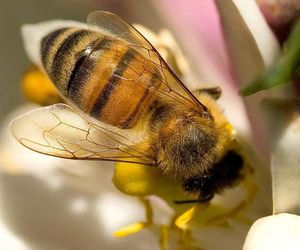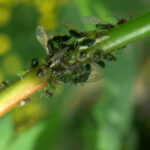Put nature’s ‘natural friendships’ to work for a healthier, more productive garden. Organic gardeners have used companion planting for years to cut down on pests and improve plant health.
Companion planting is the practice of growing certain plants near one another for their mutual benefit. One plant may assist another by repelling or attracting insects, providing shade, attracting pollinating bees, repelling pests such as while cabbage butterflies or aphids, occupying different root zones, or even decomposing into nutrients needed and absorbed by the other plant.
Plants can also be considered ‘companions’ if they mature at different times when planted together.
Some plants have an invigorating effect on each other, such as beetroot and onions, or corn and pumpkins. However, there are also some plants that are considered natural enemies, such as beans (or peas) and onions, which tend to diminish each other’s growth.
The way in which plants help each other grow are as varied and interesting as the plant type themselves.
Peas, beans and other pod-type vegetables harbor bacteria in their roots that capture nitrogen from the air, making this important nutrient readily available to neighboring plants. As a result, these plants are good companions to root vegetables, such as carrots, turnips, radishes and beetroot.
Aromatic marigolds exude a substance from their roots that repels whiteflies and nematodes. Many gardeners plant a border of marigolds around their vegetable garden to repel these pests.
Garlic is a good all purpose pest repellent. Grown in rich soil, it gives off sulphur compounds (which make it smell) that will kill aphids and onion flies.
Many aromatic herbs are effective at warding off pests and insects. Most herbs can be grown between vegetable crops to the benefit of the entire garden. There are exceptions however, including the weakening effect sage has on beans, and dill on carrots. Any garden layout should always be carefully considered.
Did you know members of the Allium family, including chives, garlic and onions, are particularly beneficial companions to roses. In addition to repelling rose aphids, and protecting roses from black spot and mildew, Alliums can cause roses to develop a stronger scent.
To grow roses without pesticides:
1. Choose a sunny site with rich, well-drained soil. Using a shovel, dig holes for roses, allowing at least 1.2 meters between the plants.
2. Break the garlic into cloves and plant, pointed ends up, 2 cm dip, 10-15 cm apart, between the roses. Cover will soil and water well.
3. Next, plant one or two clumps of chives, 10cm apart and in front of the rose bushes. Firm the soil around the chives’ roots and water well.
4. Plant rhubarb behind the roses. The poisonous leaves of rhubarb will discourage many insects from attacking the roses.
Growing tomatoes without pesticides:
1. In a sunny, well drained site, plant tomatoes in a row, leaving at least 1.2-1.5 meters between plants.
2. Plant borage and basil between tomatoes to encourage strong growth and to attract beneficial insects.
3. Edge the bed with five insect-repelling marigolds and five tomato stem-borer attracting dill plants.
Common companion plants include:
Marigold: Marigold repels nematodes, aphids, beetles and cabbage maggots and is a good companion for roses, strawberries and most vegetables.
Nasturtium: These plants attract aphids from other plants and repel carrot rust flies and beetles. They are a good companion for asparagus, melons and most vegetables.
Clover: Clover repels many insects, including aphids, cabbage butterflies, cabbage root flies and wireworms. Clover is a good companion for fruit trees and vegetables.
Onion (Allium family): Repels cabbage loopers, maggot worms, carrot rust flies, aphids and potato moths. It is a good companion for most vegetables, except peas.
Corn: Corn repels pumpkin beetles and is a good companion for cucumbers, peanuts, pumpkins, soybeans, beans and squash.
Radish: Radish repels cabbage maggots and pumpkin beetles and is a good companion for peas, lettuce and squash, especially if some are allowed to bloom.
Coriander: This herb repels potato moths, aphids and spider mites; attracts beneficial insects and is a good companion for fruit trees, potatoes and tomatoes.
Basil: Basil repels asparagus beetles and flies; Opal basil repels tomato stem-borer and is a good companion for asparagus, tomatoes and most vegetables.
Dill: Repels cabbage loopers, spider mites, caterpillars, and codling moths. Dill is a good companion for broccoli, cabbage, cauliflower, fruit trees and tomatoes.
Rosemary: Rosemary repels cabbage butterflies, carrot rust flies, snails and slugs. It is a good companion for brassicas, carrots, beans and other vegetables.
Sage: This herb repels cabbage loopers, maggots and cabbage butterflies. It is a good companion for carrots, brassicas, marjoram, strawberries and tomatoes.
Garlic: Repels aphids, Japanese beetles, slugs and snails. Garlic is a good companion for fruit trees and vegetables, except peas or beans.





